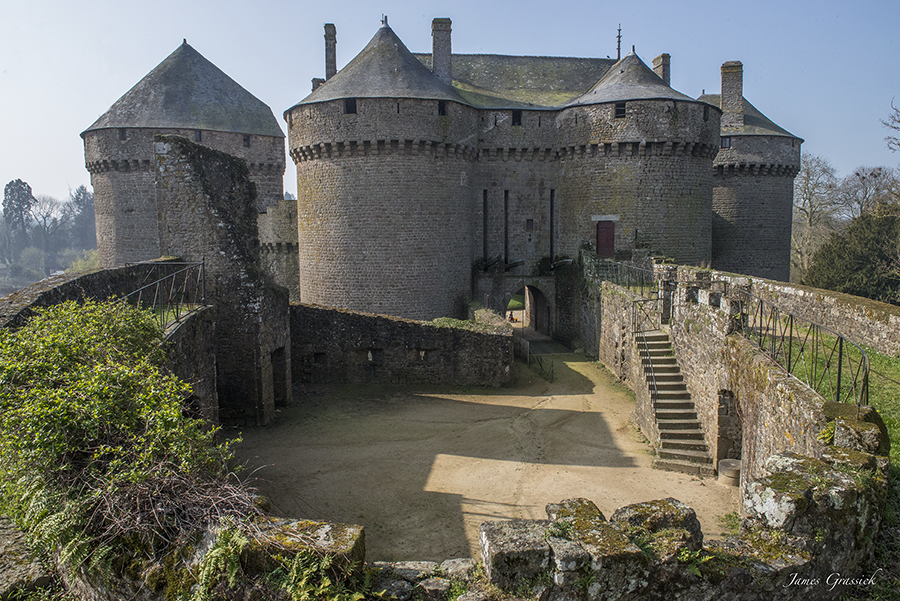Le château fort de Lassay, édifié au XVe siècle, est situé sur une terre de légendes.
C’est à Lassay que fut enterré Saint Fraimbault, saint évangélisateur du Maine au vie siècle, dont la vie légendaire aurait inspiré à Chrétien de Troyes le personnage de Lancelot du Lac.
Contrairement à la plupart des forteresses médiévales, souvent abandonnées ou démantelées, ou remaniées au fil des époques pour devenir des demeures de plaisance, le château de Lassay a traversé les siècles sans modifications notoires.
Il est donc un exemple exceptionnel d’architecture militaire du XVe siècle, homogène et encore intacte.
Son histoire est celle d’une place forte située aux marches de trois provinces : Maine, Bretagne, Normandie.
De ce fait Lassay fut l’objet de nombreux sièges disputés avec acharnement au XVe siècle lors de l’invasion anglaise et au XVIe siècle au cours des guerres de religion.
À partir du XVIIe siècle, sa fonction militaire s’effaçant, ses propriétaires lui sont restés attachés et ils y ont vécu, lui per- mettant de braver fièrement le cours du temps, jusqu’à nos jours.
Sa silhouette unique, avec ses huit tours reliées par un rempart et sa barbacane, s’imprime pour toujours dans l’imaginaire de ceux qui l’ont vu – Victor Hugo, frappé par cette silhouette en a fait un dessin célèbre.
Dans le cadre des visites guidées, vous pourrez découvrir le fonctionnement d’une garnison militaire du XVe siècle. Le guide vous ouvrira les salles meublées, chambre à coucher, salle d’armes, cuisine avec son curieux potager en granit et une belle collection de cuivres anciens…
Une promenade dans le parc romantique complète la visite.
The castle (or ‘château fort’) of Lassay, built in the 15th century, is located in a land of legends.
Saint Fraimbault, who preached the Gospel in Maine in the sixth century, is buried at Lassay. His legendary life would have inspired the twelfth century poet Chrétien de Troyes, with the enigmatic figure of Launcelot of the Lake.
Unlike most medieval fortresses, which over the centuries have been either abandoned, demolished or transformed into private residences, the castle of Lassay has survived with few major alterations.
It is a rare example of fifteenth century military architecture which remains intact. Its history is that of a stronghold straddling three provinces – Maine, Brittany and Normandy.
Due its position, Lassay was repeatedly besieged during the English invasions of the 15th century, the wars against Brittany, and during the religious wars of the 16th century. By the end of the 17th century it had ceased to have any military function, but as its owners were devoted to it and lived there continuously, it has endured until the present day.
Its striking silhouette, with its eight towers, ramparts and barbican, always stays in the memory of those who visit the château – Victor Hugo was so impressed that he drew a famous sketch.
On a conducted tour, you will see how a military garrison was run in the 15th century. The guide will also show you furnished rooms which include an armoury and a kitchen which has a curious old granite stove and a fine collection of ancient copper utensils.
A walk in the delightfully romantic park completes the visit.
